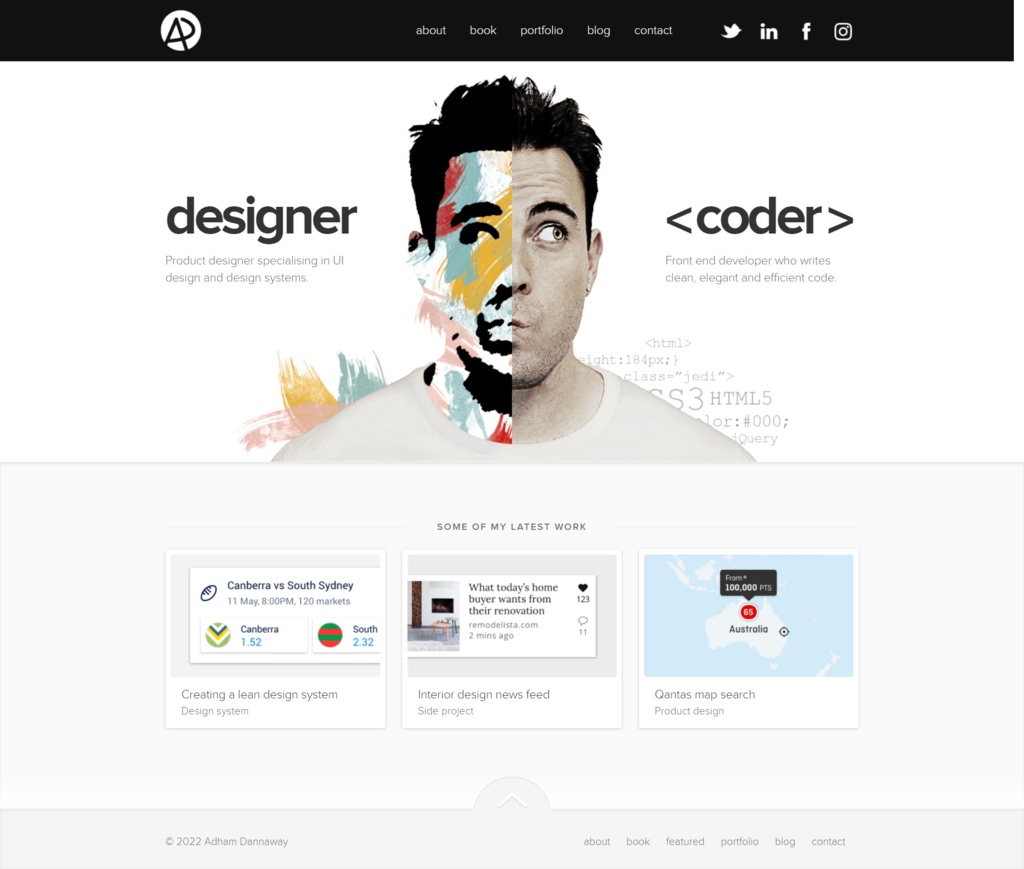Unveiling the Secrets of Ghosted Domains
Explore the intriguing world of expired domains and online opportunities.
The Secret Sauce Behind Irresistible Portfolio Websites
Uncover the secrets to crafting portfolio websites that captivate and convert! Elevate your online presence with expert tips and stunning examples.
5 Essential Elements of a Winning Portfolio Website
Creating a portfolio website that stands out requires careful consideration of its essential elements. First and foremost, a clean and intuitive design is crucial. Aesthetic appeal not only captures the attention of potential clients but also reflects your professionalism. In addition to design, high-quality visuals are paramount. Showcase your best work with striking images or videos that accurately represent your skills and services. This could include an image gallery or embedded videos that highlight your projects in action.
Another vital component is clear navigation. Ensure that visitors can easily explore your portfolio without confusion. Structure your site with a logical flow, using menus and links that guide users to different sections. Finally, incorporating strong calls to action throughout your site encourages visitors to engage with you further, whether it’s inviting them to contact you or prompting them to view more work. Together, these elements create a cohesive and compelling portfolio website that showcases your talent effectively.

How to Craft Compelling Case Studies for Your Portfolio
Creating compelling case studies for your portfolio is essential in showcasing your skills and the impact of your work. Start by selecting the right projects that highlight your strengths and contribute to the overall narrative of your expertise. Consider using the following steps:
- Define the Problem: Clearly outline the challenge faced by the client or project.
- Outline Your Approach: Describe the methods and strategies you employed to address the problem.
- Show Results: Highlight the outcomes, using data and metrics to provide concrete evidence of your success.
Once you have gathered all your information, structure your case study in a way that engages the reader. Use visuals, such as charts and images, to break up the text and make your points more impactful. Additionally, consider including direct quotes from clients or team members to add authenticity and depth. Remember, a great case study not only informs but also inspires potential clients about the possibilities of working with you.
What Do Clients Really Look for in a Portfolio Website?
When potential clients visit a portfolio website, they are typically evaluating it on several key criteria. First and foremost, they look for visual appeal. The design should not only be aesthetically pleasing but also reflect the individual style and expertise of the creator. A cluttered or outdated layout can quickly turn clients away, while a well-organized and modern design can draw them in. Additionally, user experience plays a vital role—clients want to navigate seamlessly through the site without frustration, finding what they need in just a few clicks.
Furthermore, the quality of the showcased work is paramount. Clients are searching for examples that demonstrate not just technical skill but also creativity and versatility. A portfolio should highlight a range of projects that align with the client's desired outcomes. Testimonials and case studies can add considerable value, as they provide insight into the creator's working style and client satisfaction. Ultimately, when clients assess a portfolio website, they seek a combination of professionalism, relevancy, and engaging content that resonates with their own vision.